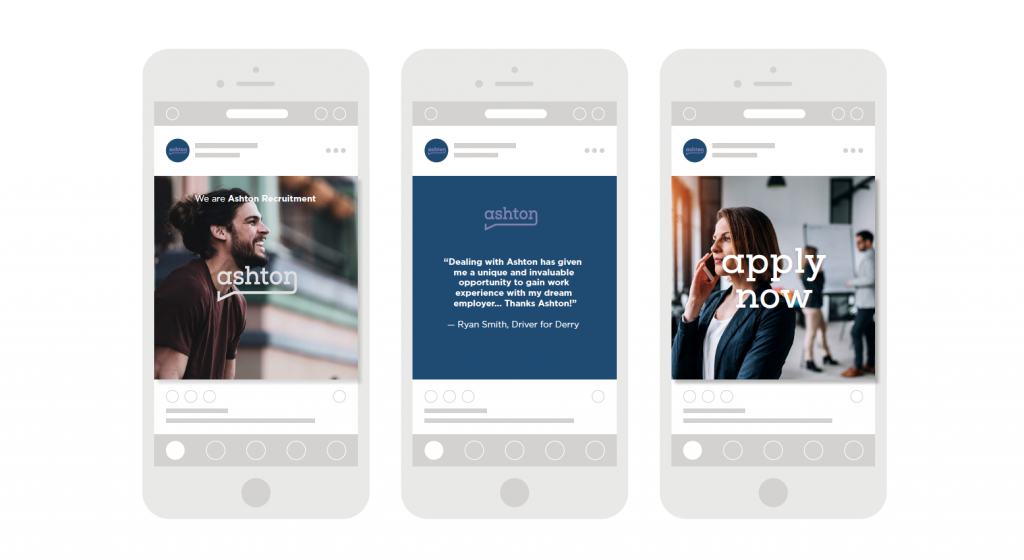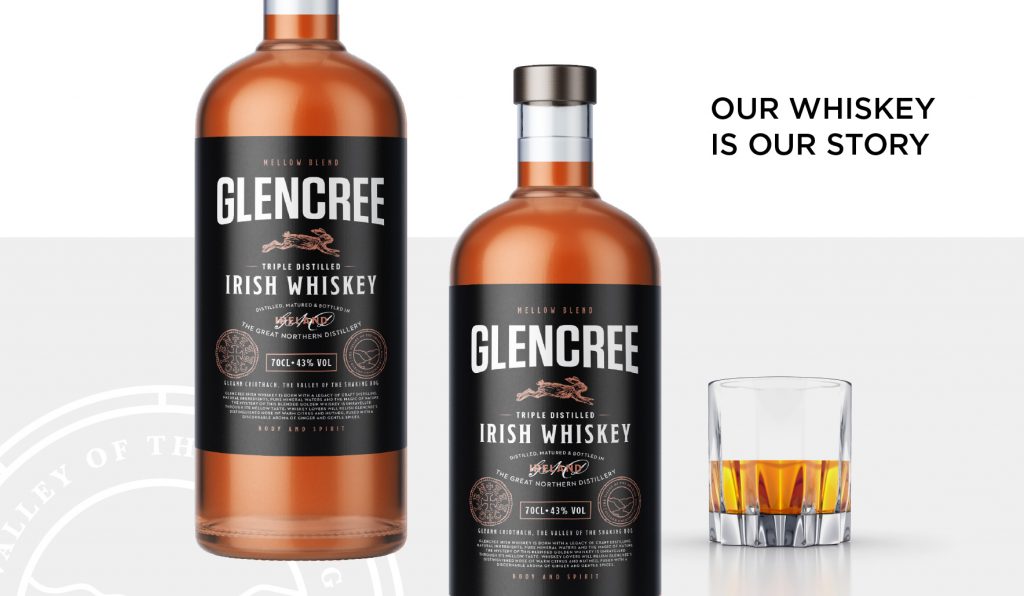A new £3 million fund to help retail micro-businesses in Northern Ireland looking to grow their business online. Many of the Kaizen Brand Evolution Clients who are looking to develop their online selling ability and capacity may be eligible for this support.
Get in touch with our Client Services Team. They’ll only be too happy to help with your application and provide guidance on the most suitable opportunities for your business.
The COVID-19 Micro-business E-commerce Grant (MBEG) is open to any micro-sized retailer that wants to prepare for growth, develop their customer base and find new markets by enhancing their digital offering, building e-commerce capability and increasing online sales. The scheme was developed and is operated by Invest Northern Ireland.
What is available?
Businesses can access up to a maximum grant of £5,000 to support 80% of eligible costs (projects must have a minimum of £1,250 of eligible expenditure).
Eligible activities include the services of a supplier(s) providing expertise to:
- – Review current digital marketing capabilities and online sales channels.
- – Develop a digital marketing/e-commerce strategy to drive sustainable growth in online sales.
- – Implement an enhanced online e-commerce system or improvements to your existing e-commerce solution for the business.
- – In-house training and knowledge transfer to develop the digital marketing and e-commerce capability of the employees for the business.
- – Improve integration and automation with existing e-commerce systems.
How Can Kaizen Brand Evolution Help?
Research to Identify Relevant Benchmarks
Our analytics teams will conduct a thorough in-depth review of the markets the organisation operates in. We will identify relevant benchmarks through which to compare effectiveness of the proposed activity and to set a baseline for this project. A report will be provided to present a user-friendly interpretation of the data.
Review of Current Digital Marketing Capabilities and Online Sales Channels
Taking an objective view of current presence and activity, we will respectfully review the sales and digital marketing channel. We will analyse the data collected where available and where not available make suggestions to support data collection for future projects.
Where available we will review the sales channel analytics data to understand how and where customers visit the site as well as what they do on their sales journey.
Develop a Digital Marketing Strategy to Maximise Online Presence
Using our extensive experience in this area we will focus on the relevant digital marketing activities suitable to your organisation. We will deliver a strategy that will have the greatest impact and value addition to the organisation. We will build off-site and on-site processes and plans that can be adopted by your in-house team for output. Where current systems in use are to be retained, we will be respectful of obligations and integrations they may support.
Develop an e-Commerce Strategy to Drive Sustainable Growth in Online Sales
Our team will provide the strategy and plan across a suite of areas all focused on delivering increased sales. This will include increasing traffic, reducing store abandonment, reducing cart abandonment, increasing customer retention and engagement.
Implement an Enhanced Online e-Commerce System or Improvements to Your Existing e-Commerce Solution for the Business
Reviewing current e-commerce functionality in line with the organisations objectives we will review if it is the most suitable option for the organisation. In the case where the system requires optimisation or development to become more effective we will provide suggestions and costs. Our team will provide a report to support and justify our suggestions in this area.
Training and Knowledge Transfer to Develop the Digital Marketing and e-Commerce Capability of the Employees for the Business
Our digital marketing and web development teams will provide a training series to support the knowledge transfer of all systems used to deliver and develop the online capabilities of the organisation. We will ensure adequate reporting guidance is provided to support the organisation as a whole
Improve Integration and Automation with existing e-Commerce Systems
Where existing e-commerce functionality can be improved upon, Kaizen will make suggestions and act where appropriate to deliver enhanced integration within systems and automations to support increased efficiency.
As a micro-sized retailer, you are eligible if:
- Your business operation is based in Northern Ireland.
- You are a micro-sized(link is external) business, trading at least two years and employing less than 10 full-time equivalent staff in Northern Ireland.
- Your business has physical, retail premises in Northern Ireland (e.g. high street shop, sales/trade counter, etc).
- If your business is not exclusively retail then more than 50% of your turnover must come from the retail part of your business (i.e. you are not primarily a manufacturer or producer, etc).
- Your business has an existing online presence such as a basic business website, online marketplace or social media channels.
- Your business has a physical product, or a range of physical products, that can be sold online and shipped to customers.
- Your project is not receiving any other public funding such as government or European Union funding.
- You are able to complete your project, pay your supplier and make a claim within the next 6 months.
If you are a business, which is part of a group structure with the same ultimate ownership, you can only submit one application across the group.
Who cannot apply?
The following are examples of businesses that are not eligible to apply:
- Businesses that cannot demonstrate they have a viable and profitable operation.
- Businesses involved in the primary production of agricultural products, fisheries and aquaculture.
- Businesses providing hospitality and leisure services such as hotels, pubs, cafes and restaurants.
- Businesses primarily involved in the provision of a service such as travel agents, mechanics and tyre fitting services, grooming and beauty services, hair salons, tattoo artists, funeral directors, medical, dental and veterinary practices, accountancy, legal and financial services and insurance broker services.
- Franchisees of retailers for whom the franchisor provides material online support such as online marketing or e-commerce expertise.
- Businesses involved in activities that Invest NI considers as ineligible or as involving an unacceptable reputational risk, such as gambling, adult entertainment, tobacco products and cannabis-based products, which are not, authorised as medicines.
How to apply
The COVID-19 Micro-business E-commerce Grant is open for applications.
Making an application
The online application process takes approximately one hour to complete.
If you meet the eligibility criteria, you will need the following information to complete the online application form.
- Your business name.
- Your contact name, email and phone number.
- Your business address and postcode.
- The date you established your business in Northern Ireland.
- The number of people you employ in Northern Ireland.
- The financial year-end of your business.
- The annual turnover of your business.
- The balance sheet total of your business.
- Annual accounts and financial position including offline and online sales.
- Details of the project with costs, tasks/work to be completed and timelines of when the work is to be started and completed.
- Your company registration number (if applicable) issued by Companies House, beginning with NI followed by six numbers, for example, NI123456.
- Details of any De Minimis funding your business (if applicable) has received in the current or previous two fiscal (accounting) years.
You will also need to provide three types of documents electronically:
- A valid form of Photographic ID as proof of your identity, such as a scanned or photograph copy of a valid passport or a current (full or provisional) driving licence. All driving licences with an expiry date between 1 February and 31 August 2020 will be treated as valid for a further seven months;
- A scanned or photograph copy of proof of the business address such as a bank statement dated within the last three months for an account used by your business that clearly shows the address;
- A supplier quotation(s) for all the project costs included in the application form. The costs should be itemised and sufficiently descriptive to allow us to determine which costs are eligible. To get the best value for money you are expected to shop around and get quotes from other potential suppliers with a track record of delivering similar services but please only attach the preferred supplier quotation(s).
*If there are any queries over value for money Invest NI may ask for your alternative supplier quote(s).
Further information
For more information on the scheme and applying, read the Micro-business E-commerce Grant – guidance notes (PDF, 450K).
If you have any enquiries about the COVID-19 Micro-business E-commerce Grant complete the online enquiry form(link is external).











